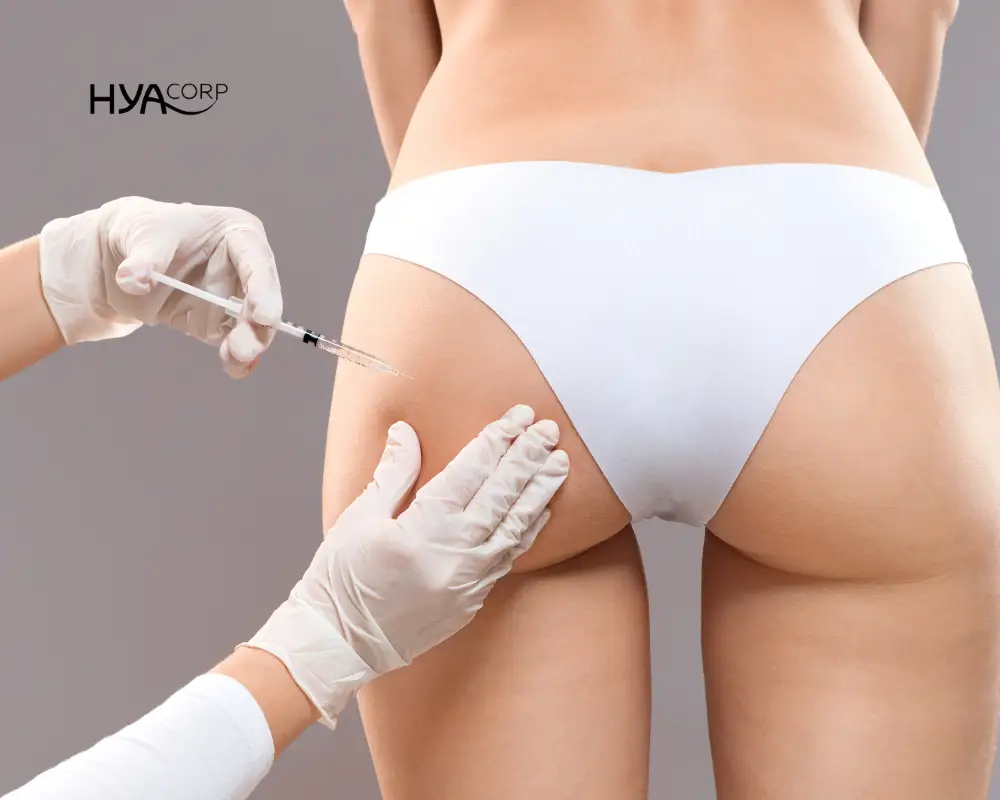For the face or the body, hyaluronic acid injections arouse curiosity, envy and perhaps also sometimes concern. Between preconceived ideas and questions, we take stock of the situation with the German laboratory BioScience GmbH, a pioneer in the field, but also with a doctor, Dr Antoni Calmon.
With age, wrinkles deepen and certain areas of the body, particularly the buttocks, lose volume or elasticity. While the effects of time on the skin are natural and unavoidable, certain deep marks can generate a drop in self-esteem or self-confidence, and the question arises as to whether to seek medical help.
There are two options in this case, with distinct approaches: cosmetic surgery and the use of fillers. The first consists of performing surgical procedures under anesthesia in an operating room, for example, while the second involves medical procedures that are as non-invasive as possible, performed in the office, and which allow for rapid results. In both cases, these are medical procedures that should not be trivialized and that deserve reflection and consultation with a trained specialist.
Products used within a strict framework
Hyaluronic acid, a natural substance, can be used to be injected into the skin in order to smooth it or to bring volume. Since 2006, the BioScience GmbH laboratory has been developing injections based on pure hyaluronic acid of non-animal origin under the brand name HYAcorp, which are only to be used by trained health professionals.
The fact that hyaluronic acid is already present in the body makes it totally biocompatible and absorbable, which reduces the risk of potential adverse reactions, unlike other products on the market such as silicone. Several types of cross-linking (i.e. degree of viscosity) of hyaluronic acid allow it to be used for different parts of the body and face.
A very precise medical procedure
If it is very well tolerated, it is necessary before launching out to inform oneself as much as possible and to ask the right questions. It is important to check whether the product has the CE mark, which guarantees impeccable sterilization and compliance with all the requirements applicable at the EU level, which allowed it to be placed on the market.
In addition to product checks, hyaluronic acid injections are a medical procedure in which every step must be respected. First of all, the sharing of information about the procedure and the risks beforehand. The doctor must provide the patient with as much information as possible and make them aware of the side effects that may occur after the procedure. The physician's examination to review your situation and medical history. Compliance by the professional with the laboratory's recommendations, particularly with regard to the maximum quantity of product to be used, as well as the rules of hygiene and asepsis during the procedure and, finally, close follow-up after the treatment. There are also recommendations in case of "touch-ups" by the doctor, concerning the time and the quantity of product used. Certain rules must also be followed by patients to achieve the ideal result and minimize the risks.
For example, it is advisable to avoid any intense effort and not to exert pressure on the treated area, to avoid drinking alcohol twenty-four hours before and after the procedure, to avoid taking ibuprofen or aspirin, to avoid exposure to high temperatures... A good follow-up of the procedures is essential. In this sense, prior dialogue with the doctor is fundamental in order to be sure of your choice and to know all the instructions to follow before and after the treatment, specific to your situation. You can ask him/her to tell you about his/her experience with injections, the side effects he/she has observed during previous treatments and why not show you examples of before and after cases.
3 questions to Antoni Calmon, Aesthetic Doctor:
1. What is hyaluronic acid?
It is a sugar produced by the body, like the synovial fluid that lubricates the joints or the vitreous body that is inside the eye, in a transparent and viscous form. Finally, it is also found in the skin, which gives it its pulpy and hydrated appearance.
2. What are its effects on the face and body?
Fluid, it is used in mesotherapy (injection of low doses) to hydrate the skin at the level of expression lines or lips, which need to keep a certain flexibility. More dense, it offers a volumizing aspect to the body, especially to the buttocks or calves. Finally, very firm hyaluronic acids will allow the treatment of rather fixed areas, such as the chin or the cheekbones.
3. What precautions should be taken before and after an injection?
Before the injection, you can take arnica granules and paracetamol, but avoid anti-inflammatory drugs that could increase the risk of bruising. Afterwards, it is advisable to put a little ice on the injected areas, except on the lips which could swell. To accelerate the healing of the tissues, you can continue to administer arnica granules, and above all put on sun cream index 50, to avoid any pigmentary rebound.
Original Source: https://www.journaldesfemmes.fr/beaute/soins-du-corps/2837113-tout-savoir-sur-les-injections-d-acide-hyaluronique/














